
This post is prolonged overdue! I know I have promised to movie my coloration mixing with liquid watercolor for really some time. The fact is, mixing this medium is not as simple as mixing tempera paints. It is significantly from an actual science. Component of that rationale is that liquid watercolors are very concentrated so not only does a little go a very long way, but they are all very dim and glimpse comparable so it’s just more durable to gauge the coloration you are earning. An additional reason this has taken a while is that I really do not ordinarily mix a entire batch of new hues at as soon as. I ordinarily just fill in when required. But I last but not least shot the online video and set it all together for you!
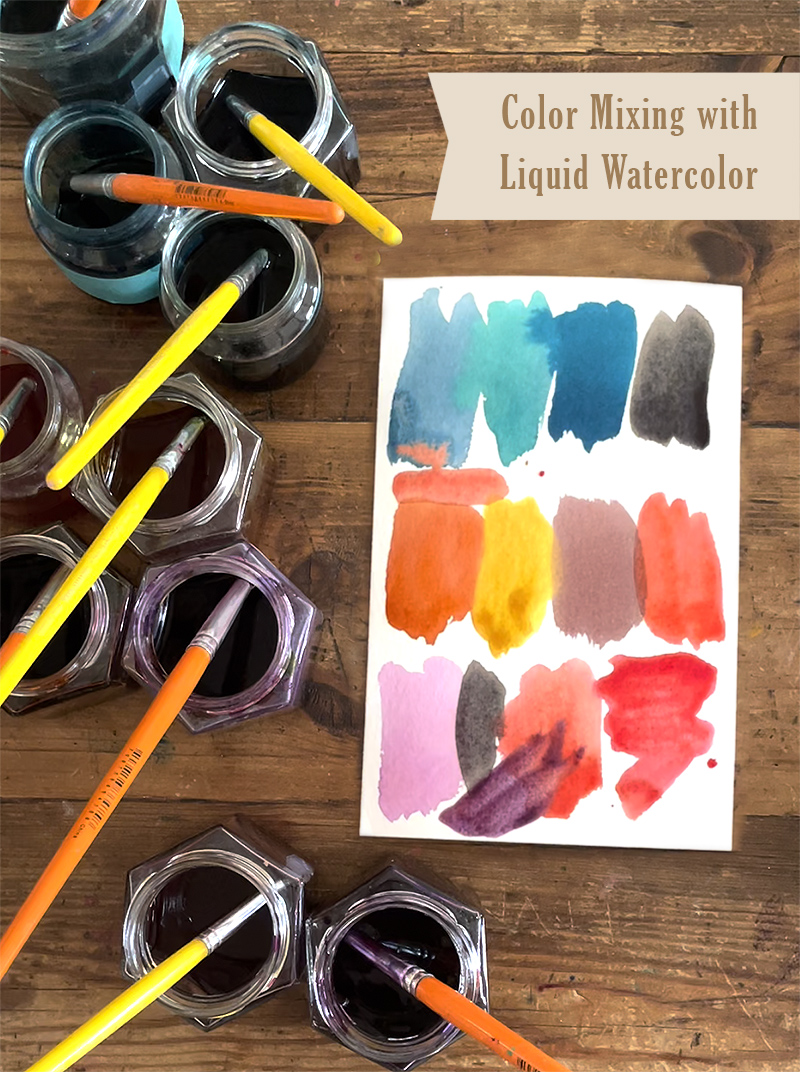
[ I am a participant in affiliate programs designed to provide a means for bloggers to earn small fees at no cost to you by linking to Amazon.com and affiliated sites. ]
Ideas on working with Liquid Watercolor
~ I buy Blick mainly because I appreciate their color possibilities, and their colors are very concentrated. They past longer in my see. But honestly any liquid watercolor operates! Get the 8oz dimensions.
~ Liquid watercolor bottles tend to leak from the top when working with the spout, so I just take off the leading and pour when mixing hues.
~ You do not want to commit a great deal of funds on liquid watercolor. You can just buy 7 basic shades to make every other color: red, blue, yellow, inexperienced, purple, pink, black.
~ I keep my liquid watercolor in a wide variety of jars. Some toddler food items jars, some hexagonal jars I purchased in this article, and some jam jars. Just make positive the prime fits tightly. The colours must final a lot of months, based on how normally you paint.
~ Have a cup of water helpful when mixing shades. Specially with Blick, you will want to dilute relying on how deep or gentle you want your shade.
~ Make a swatch card on watercolor paper with the completed colours. When it dries, reduce up little pieces to tape to the lid and aspect of each color. This helps you know what the coloration is within.
~ When applying a variety of hues at at the time for a task, try out and put a brush in each shade, instead than relocating one particular brush from color to colour, which can rapidly contaminate the colours. Liquid watercolor is much less forgiving than tempera in this way.
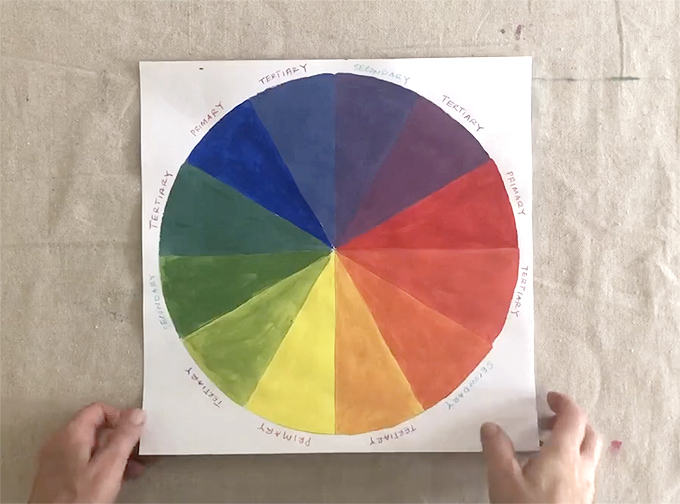
Notes on the Colour Wheel
~ As I have discussed in advance of in my Shade Mixing with Tempera Paints article, and my Mixing Pores and skin Tones post, all hues are derived from the 3 major hues: red, yellow, and blue.
~ Secondary colors are the 3 colors that are designed when mixing 2 primaries: orange (pink + yellow), environmentally friendly (blue + yellow), and purple (blue + pink).
~ Tertiary colors are when you combine 1 secondary with 1 main. This is when it gets exciting, and these are the shades are mix the most, like periwinkle (purple + blue), lime environmentally friendly (inexperienced + yellow), and magenta (purple + crimson). Of study course with tempera paint, you can use white (which I insert to every shade I mix) to lighten the hue and make even far more shades. There is no white in liquid watercolor, so I use drinking water to lighten a colour.
~ In this write-up and video, I generally use the concepts of complementary colors. Complementary shades are reverse every single other on the coloration wheel: crimson –> eco-friendly, purple –> yellow, orange –> blue. To mute a coloration, just insert a fall of its complementary colour. This makes a considerably richer shade than just including brown or black, and generates refined undertones and variations that are even more apparent with liquid watercolor.
Check out the Video!
I will confess this online video was not uncomplicated to make. My mixing strategies are so instinctual it can be difficult to describe. I also filmed it in Instagram manner, which is vertical, so justification the actuality that I keep the bottles sideways. But I do believe it will be helpful to see my method. I combined a number of hues that I forgot to report, so scroll down to the bottom for notes on people. Also, I didn’t mix any greens but you can apply the approaches I use here to mixing greens.
I have also written my notes on every coloration down below, so retain scrolling if you prefer to go through alternatively than view!
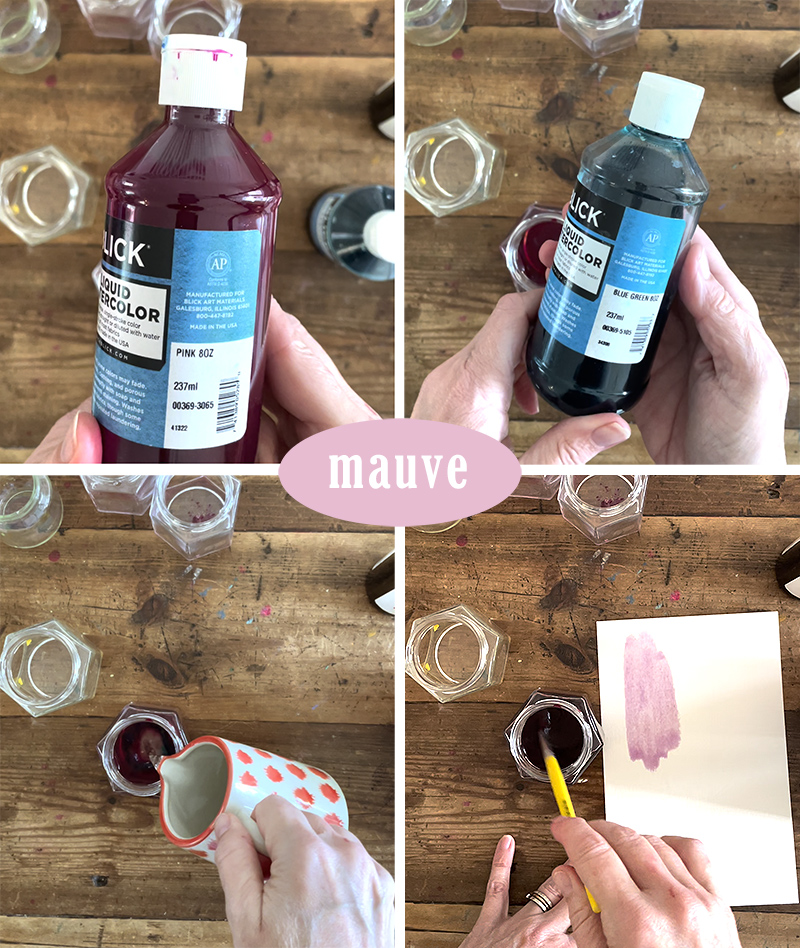
Mixing Mauve
Like with any coloration, there are a lot of ways to blend mauve. It is a light pinky/purple, so I start out with pink, increase some water, then add some blue/green. Why blue/environmentally friendly and not just blue? With just blue, it would make lavender which is cooler than mauve. The inexperienced is an unusual addition but my thought is that I desired to mute the purple and because purple is seriously just red + blue and eco-friendly is red’s complementary shade, I went with the blue/eco-friendly to check out it. It labored! It could have conveniently not worked. With tempera I would have applied pink, purple, a touch of yellow, and white – so a different way I could have blended this shade with liquid watercolor is pink + purple + fall of yellow to mute the purple and water.
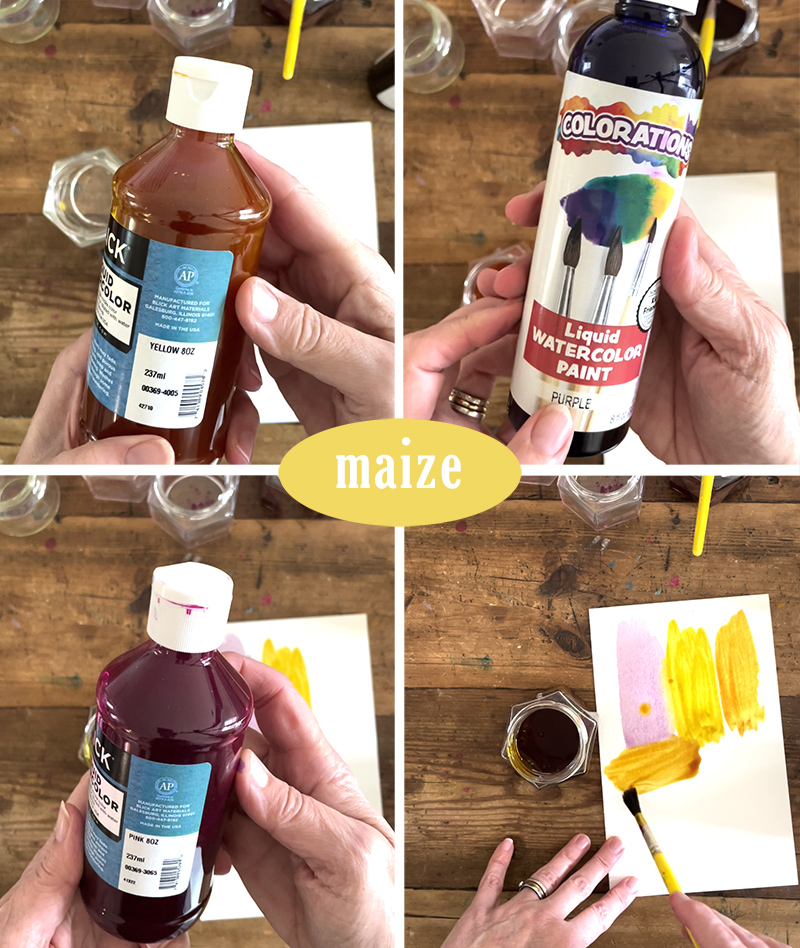
Mixing Maize
One of my musts with liquid watercolor is to not use yellow straight out of the bottle (I feel the same with tempera). I just can’s help normally muting it marginally. If you incorporate a fall of purple (its complementary coloration) then it will mute the yellow and make a mustard color. To make maize, I also added a drop of pink just to heat it up a tad. I also extra a small drinking water.
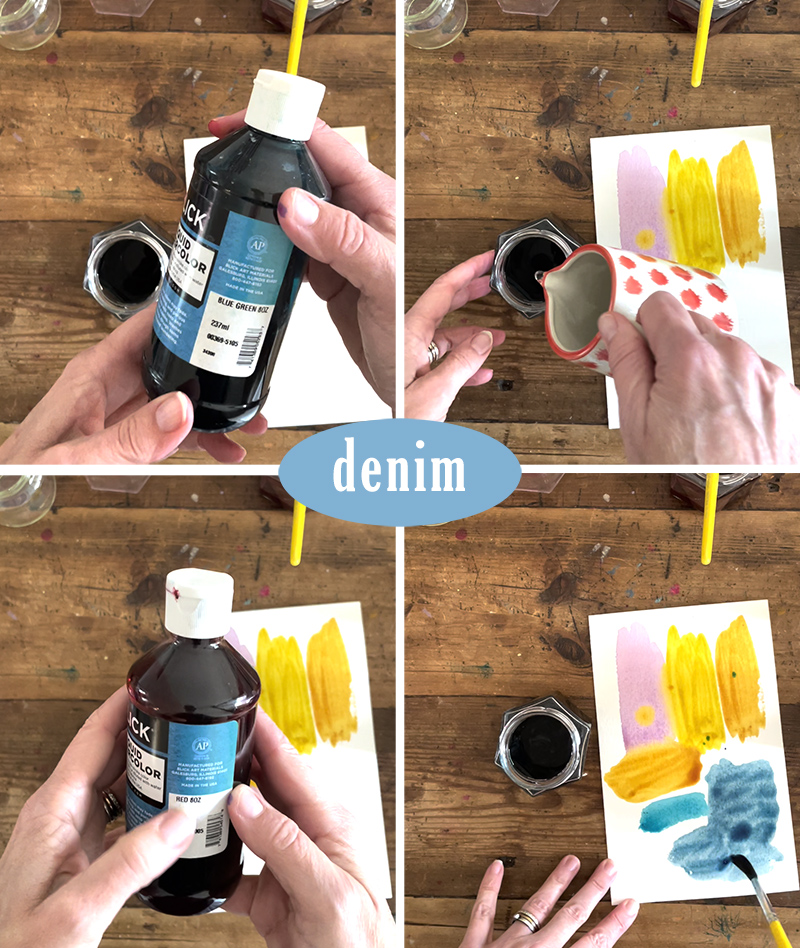
Mixing Denim Blue
For some explanation I devote half my time mixing blues and teals with liquid watercolor. I do not know why I have so a lot of shades, but it is almost certainly my obsession with the indigo shade, equally in shibori and with sunshine prints. Below I required to make a denim blue, which is a muted blue that is a tinge hotter. I started off with blue/inexperienced, additional some h2o, then added a fall of pink (green’s complementary colour). This labored! Clearly I adore the blue/green shade straight from the bottle, as well. This is one particular of the couple of colours that I use devoid of mixing. Include green to make it far more teal, yellow to make it more turquoise, and pink of training course to mute. If you increase orange to the blue/inexperienced you start out having into the brown spouse and children.There are soooo many distinct shades to make with this a person bottle of blue/environmentally friendly.
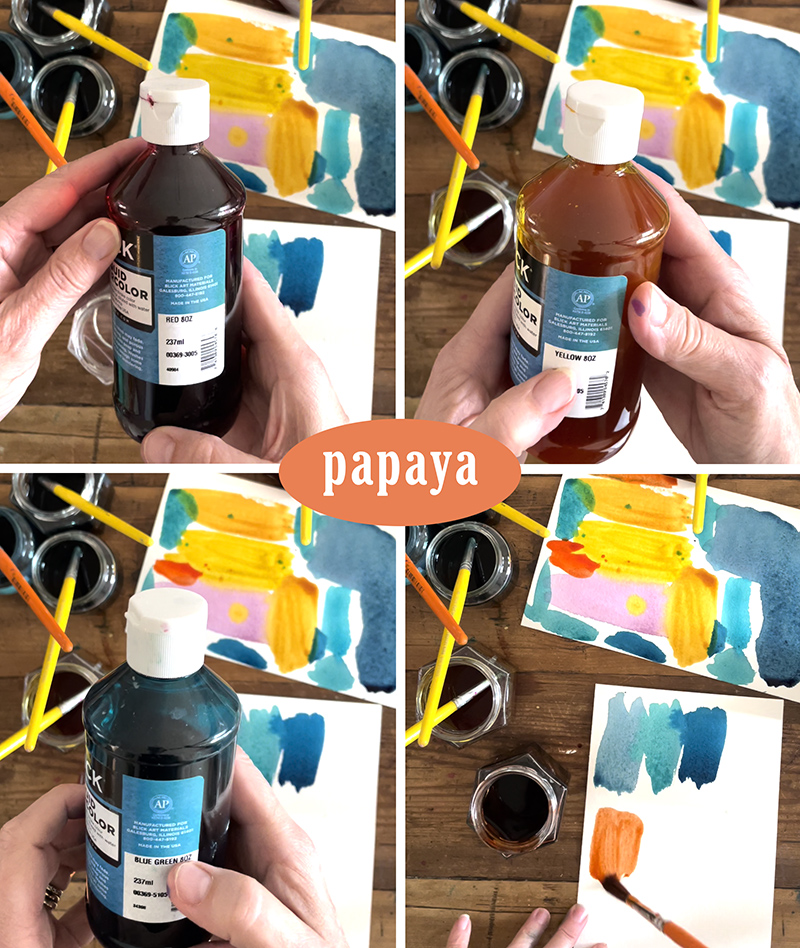
Mixing Papaya
I never like using orange straight from the bottle. I love a a lot more muted orange. Right here I am likely for a muted reddish orange, which I connect with papaya. I never have a bottle of orange since it is the easiest shade to mix. I start with red, a small yellow, and some drinking water and then I check out my coloration. I like the brilliant hue but I want to mute it a little, so I increase a fall of blue/eco-friendly and some much more h2o. I could just use blue to mute, which is orange’s complementary shade, but green is red’s complementary shade so why not attempt the blue/eco-friendly to mute and see what happens! Yet again, there are so several shades to make, and in the online video I do enjoy all-around with it a little bit as you can see in the adhering to swatches.
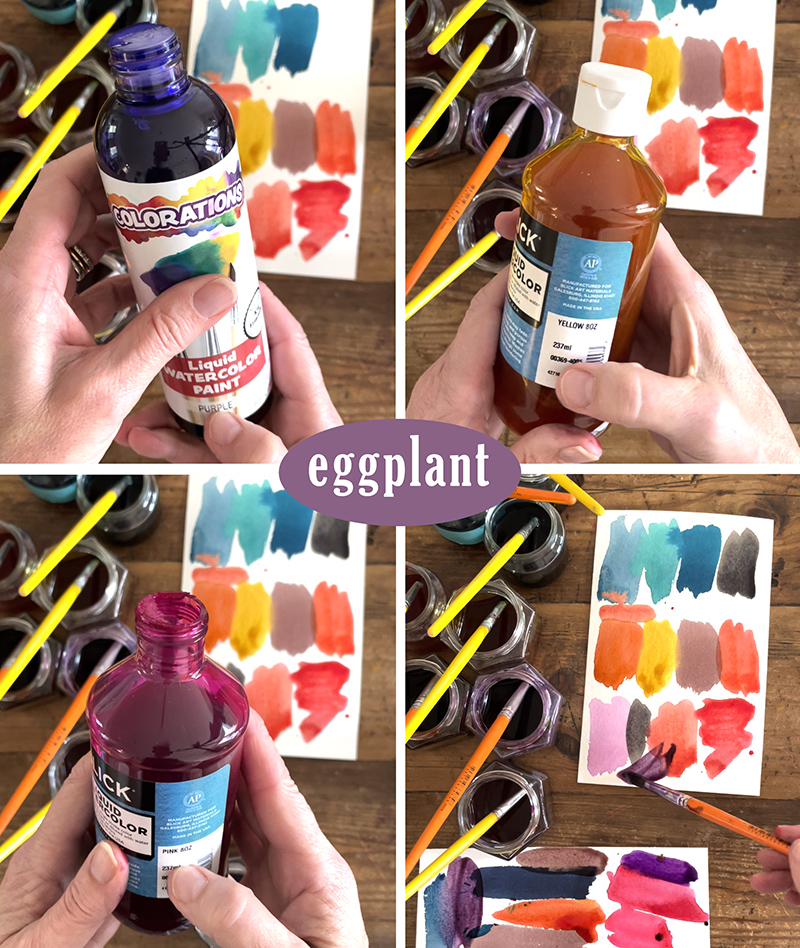
Mixing Eggplant
Purples are yet another obsession of mine. I have numerous shades at all instances. Listed here I want to make a muted purple which is pretty easy to do with just purple and yellow (complementary colours). But liquid watercolor is it is personal beast and in some cases you just do not get what you assume you’ll get. In the online video you can see that mixing these two in the quantities that I did turned it charcoal. It was extremely odd, but that’s what transpired. I tried once again and this time I added a fall of pink. It turns out the yellow is rather potent, so I had to keep incorporating more purple and pink to get the shade I required.
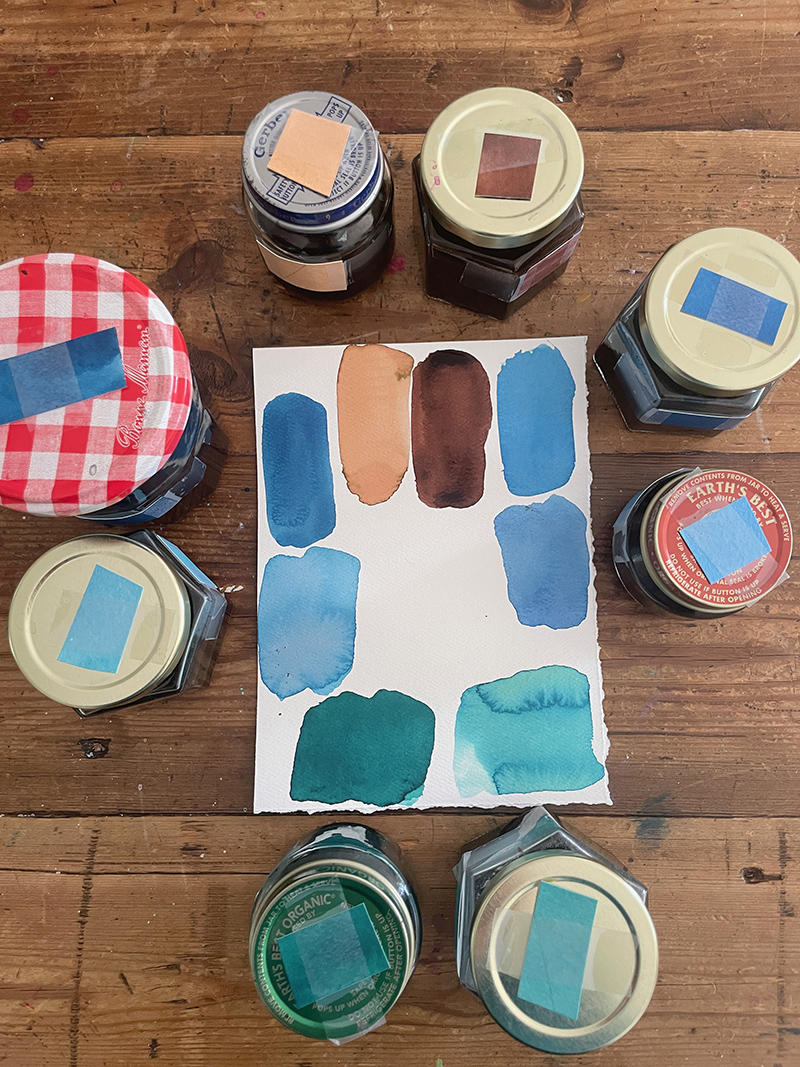
More Colours
I combined these on yet another working day but forgot to take a video clip. Browns are really quick to make, just mix 3 primaries or 3 secondaries (which in concept is however just 3 primaries). Then tweak it my incorporating more purple to make a reddish brown, or additional blue to make a cooler brown, and so on. Then increase h2o to lighten the shades. The blues and teals I now explained over, but I just required to display you some extra shades. I imagine my fave shade of all is the teal on the base still left. Just so great.
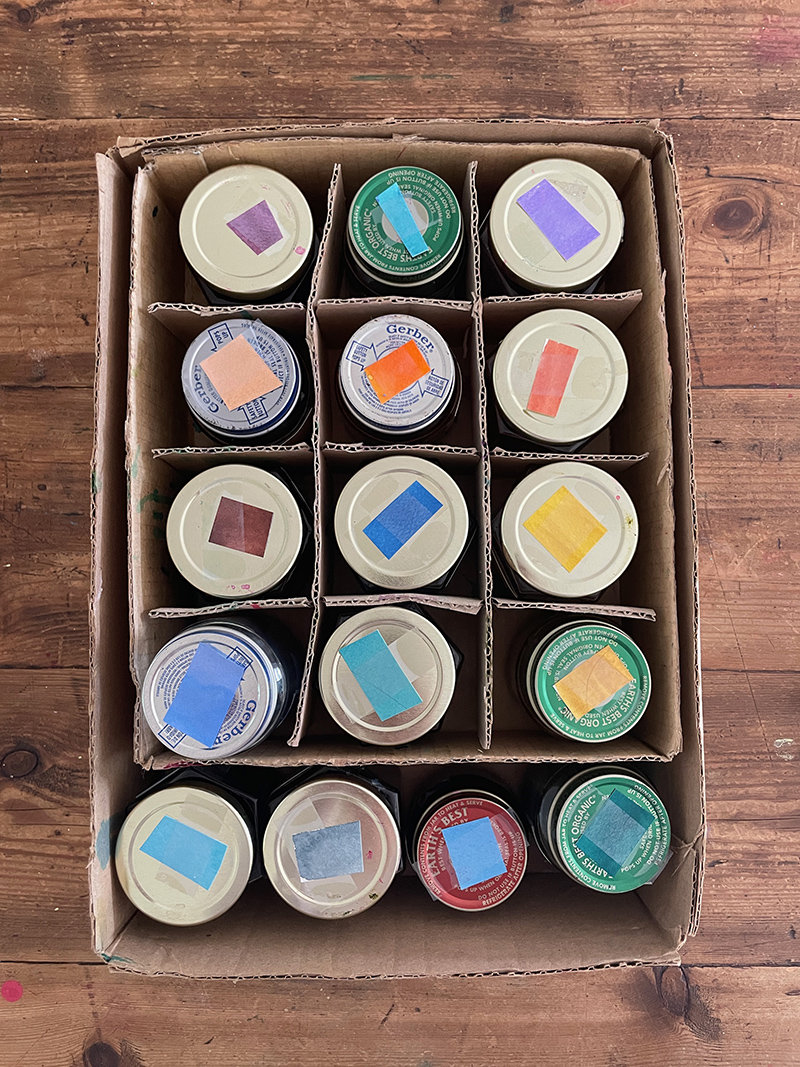
Storing Liquid Watercolor
And and lastly, here is a photo of how I retailer my jars. I continue to keep them in a closet. They retail outlet seriously nicely this way and are straightforward to acquire out and place away. The separated bins occur with the hexagonal jars if you purchase them, but you can also just minimize down a smallish box so that it acts like a deep tray.
One very last tip…
Mixing liquid watercolor is all trial and mistake, but there is certainly no “bad” shade. They are all attractive. But if you end up with a huge jar of one thing that just did not do the job out, really do not pour it out. Use is as a base to increase to other shades to mute them. or pour some of it in a new jar and keep incorporating to get a new shade. My jars certainly very last me rather a although and I really do not go by as much as you may possibly believe.
Have exciting mixing!!
xo Bar
– – – – – – – – – – – – – – – – – – – –
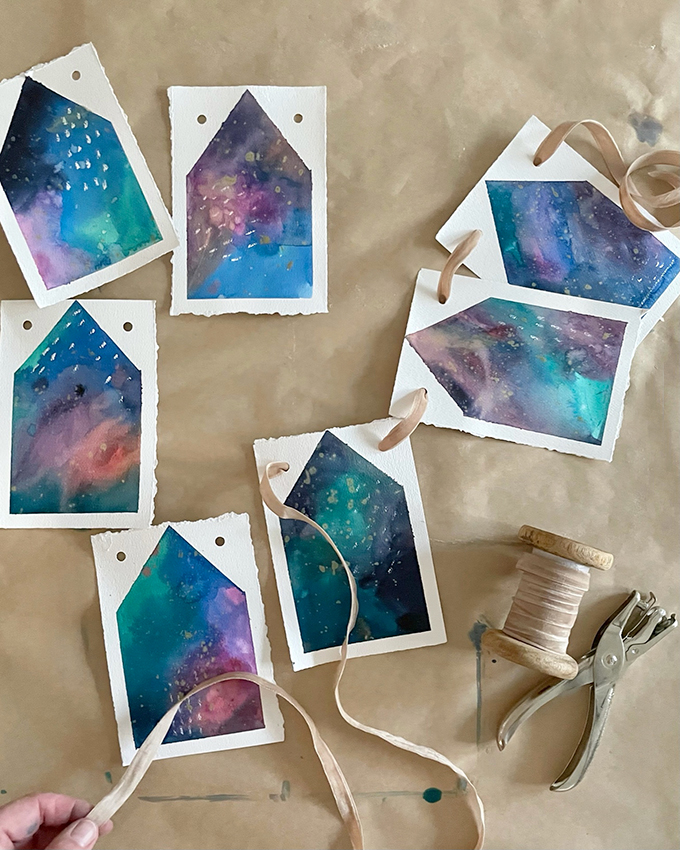
Watercolor Residence Garland
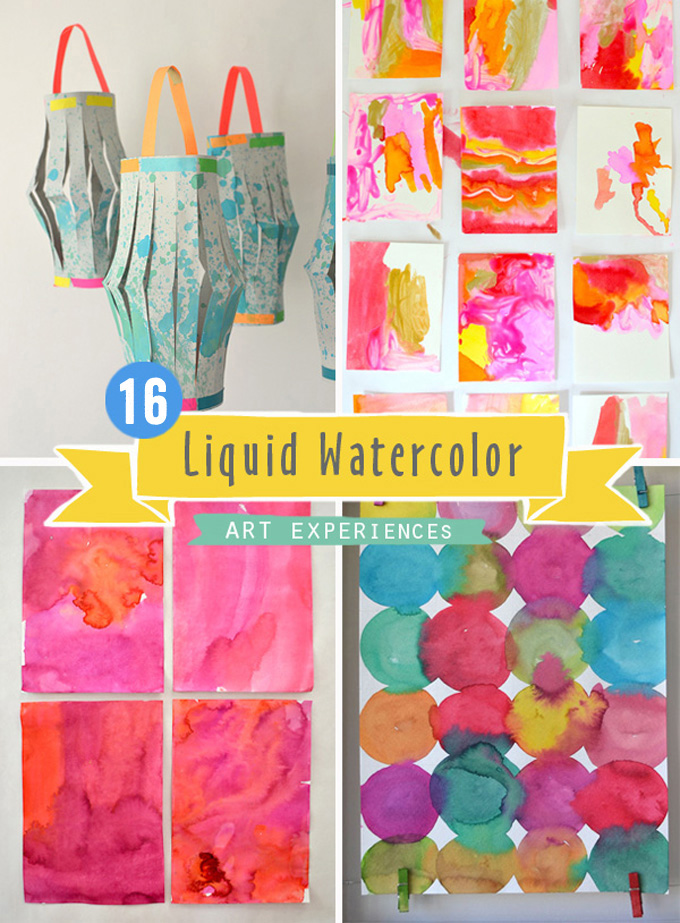
16 Liquid Watercolor Artwork Concepts
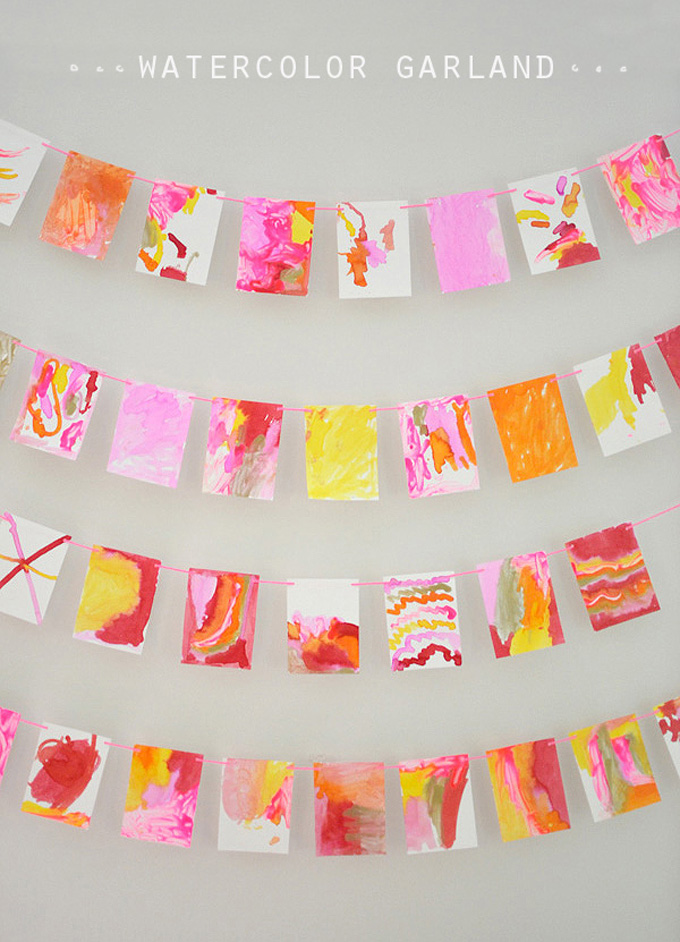
Watercolor Garland painted with Qtips






